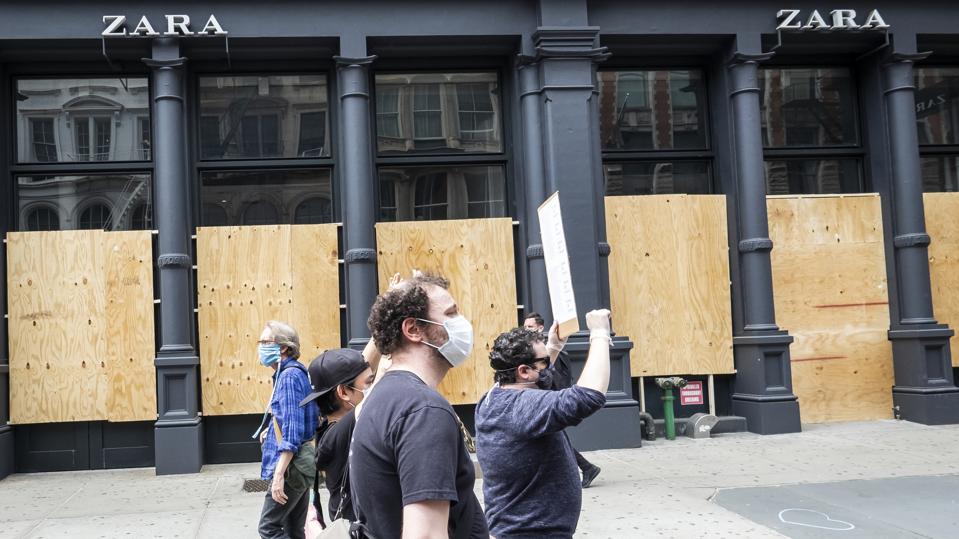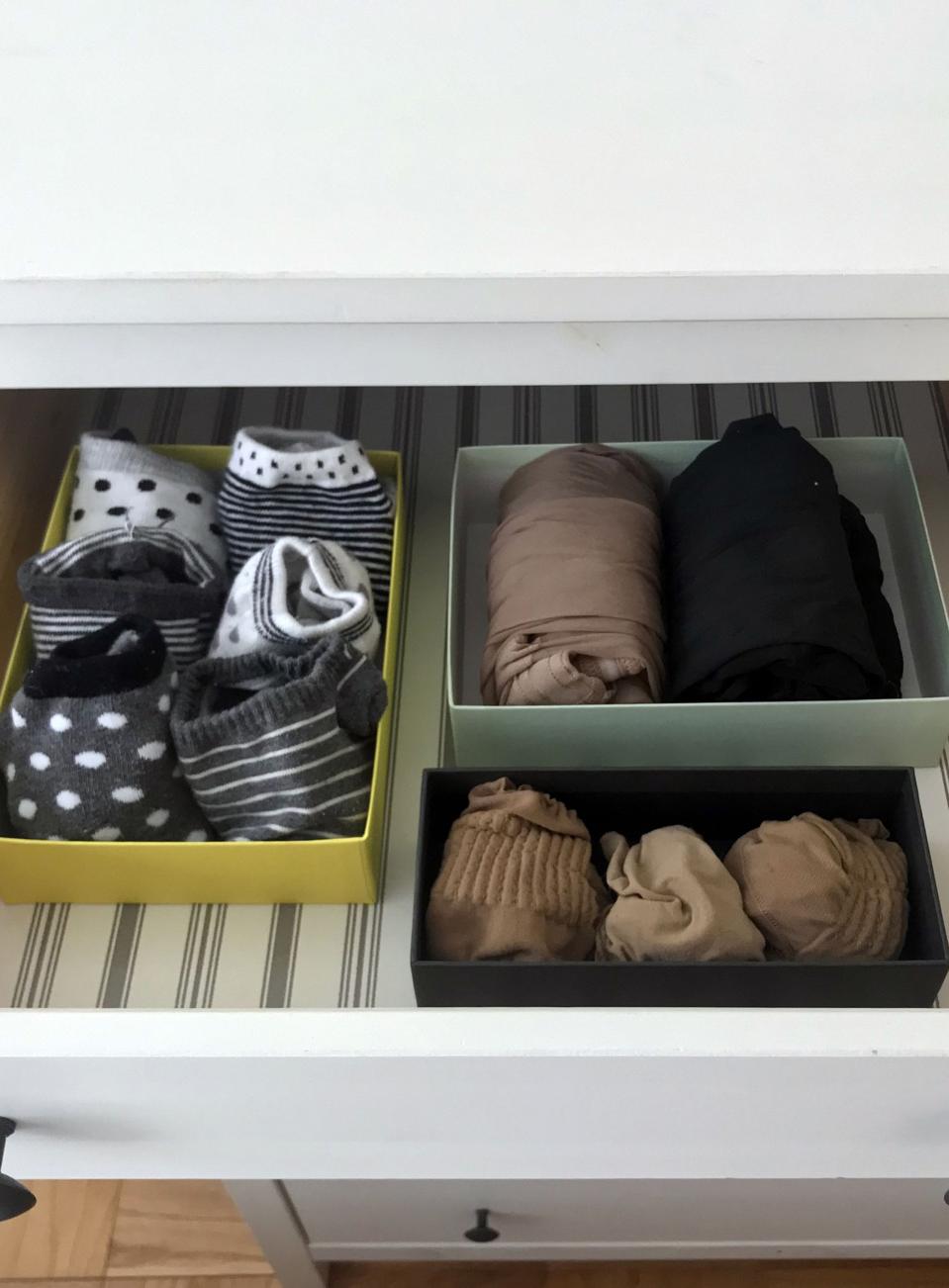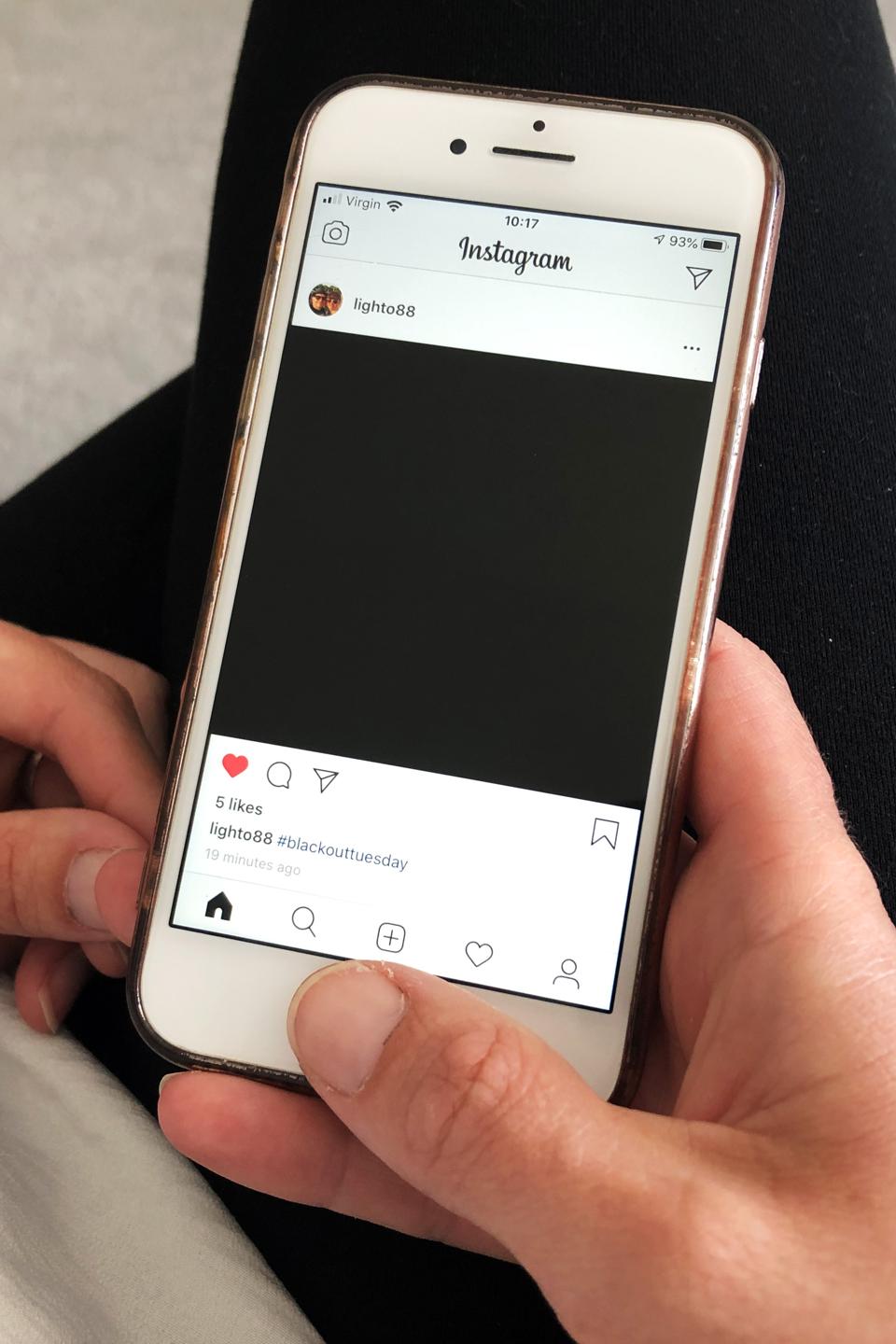Zara Results – How Lockdown May Have Changed Fashion Forever – Forbes
[ad_1]

MANHATTAN, NY – JUNE 02: Protesters walk with signs past a Zara store on Broadway in Soho that is … [+] boarded up. Since the unrest in New York City and others cities around the world, business have taken to boarding up their stores to prevent looting and destroying their businesses. Protesters took to the streets across America after the killing of George Floyd at the hands of a white police officer Derek Chauvin that was kneeling on his neck during his arrest as he pleaded that he couldn’t breathe. The protest are attempting to give a voice to the need for human rights for African American’s and to stop police brutality against people of color. Many people were wearing masks and observing social distancing due to the coronavirus pandemic. Leaders of the protest were clear that they wanted it to be a peaceful protest in light of nights of unrest looting and destruction. Photographed in the Manhattan Borough of New York on June 02, 2020, USA. (Photo by Ira L. Black/Corbis via Getty Images)
Within the same 24 hours that Debenhams announces a further 3 UK stores currently closed due to the pandemic will not reopen, Zara owner Inditex announces results that whilst subdued, show resilience.
Their interim results (February 1st 2020 – April 30 2020) highlight:
- Net sales reached €3.3 billion v. €5.9 billion in the same period on 2019
- Online sales grew strongly at +50% in the same period. In April, online sales grew 95%.
Whilst over 3,500 stores still remain closed worldwide, Zara has relied on its online offer to satisfy shoppers.
It is no secret that Inditex has invested heavily in operations, delivering fast fashion rapidly and connecting consumers with stock via a seamless online/in-store offer.
But as consumers have chosen not to be ‘all dressed up with nowhere to go’ many shoppers have taken the available time to revaluate their buying power and purchases. Wardrobes have been reorganized; the Marie Kondo method has been applied and unwanted items bagged for donation.

Socks and tights are seen arranged in a drawer in small boxes at a home in Washington, DC, as … [+] recommended by Japanese tidying expert Marie Kondo, creator of the “KonMari” method, on January 18, 2019. – Marie Kondo is small of stature, but her tidying philosophy has reached stratospheric heights. Her book, “The Life Changing Magic of Tidying Up,” has earned a cult following since its publication in the US in 2014 — but it is the 34-year-old’s new Netflix show, “Tidying up with Marie Kondo” that has everyone talking. (Photo by Sara KAMOUNI / AFP) (Photo credit should read SARA KAMOUNI/AFP via Getty Images)
Charity shops have even issued warnings that they feel unable to cope with the significant landslide of donations to come, especially as many depend on volunteers who may well be isolating,
Zara have had a sweet spot on the high street for a long time in fast fashion. They have dominated a space amongst tired, uninvested brands with bland stock and brought energy and life with fast moving stock and affordable tailoring.
That isn’t to say that Zara is the model pupil. Whist product value and price has brought many to the door time after time, it has been known to deliver a less that satisfactory customer service experience for some. Indeed reviews for its service on sites ranging from TrustPilot to Facebook range in the bottom half of ratings.
In what could be seen as the most significant moment for fashion in decades, has Zara got enough of what it takes to continue to dominate?
Talk of the ‘slow fashion’ movement had already gained momentum prior to lockdown.
With the prevalence of teenage campaigner, Greta Thunberg highlighting the damage done to our planet in our lust for consumption, consumers had shown much more interest in finding garments that were better quality, would last longer & and were created with the fair treatment of animals, people and the planet.
The rise and rise of the health and beauty sales will also see consumers more confident in altering their style through their make-up and hairstyles as much as their clothing. The health & beauty sector has seen significant growth in online sales during the lockdown, whilst fashion generally has plummeted.
In a week where there has been a powerful presence of the #BlackLivesMatter movement, several fashion giants have taken to their social media to explain that they will be taking time to revaluate their business, values and their tone of voice.
This week, online giant ASOS took to Instagram to speak to their 10.4 million followers.

WALLINGTON, ENGLAND – JUNE 02: In this photo illustration, the photographer’s wife looks at her … [+] husband’s Instagram post for the #blackouttuesday social media campaign, showing solidarity with the ongoing George Floyd protests in the USA, on June 02, 2020 in Wallington, England. The death of an African-American man, George Floyd, at the hands of police in Minneapolis has sparked violent protests across the USA. A video of the incident, taken by a bystander and posted on social media, showed Floyd’s neck being pinned to the ground by police officer, Derek Chauvin, as he repeatedly said “I can’t breathe”. Chauvin was fired along with three other officers and has been charged with third-degree murder and manslaughter. (Photo by Mark Trowbridge/Getty Images)
“ We will be examining every area of ASOS. From leadership to recruitment. From training to mental health support. From charities we back to partners we collaborate with. From brands we stock to businesses we invest in. From faces we feature to content we create.”
The post was met with over 2000 comments, as consumers and ex-employees highlighted their own experiences & demanded that the statement was followed up with the promised actions.
Zara has posted a message of support for equality to their 39.6 million Instagram followers, but not been as explicit in how the businesses will work to ensure it delivers on it.
There are some key factors to success post-pandemic for the fashion industry. A strong online offer is key, as is lean stock holding, agility and good value products that connect with the customer at a value for the price point.
However, with consumers demanding more authenticity from the organizations they shop with, it will be a significant time for brands to understand the importance of building respectful relationships with the consumer. Consumers will want fashion to demonstrate responsibility to the planet and to all people that live on it, and not just on a social media post but as a consistent way of trading.
Let’s block ads! (Why?)
[ad_2]


